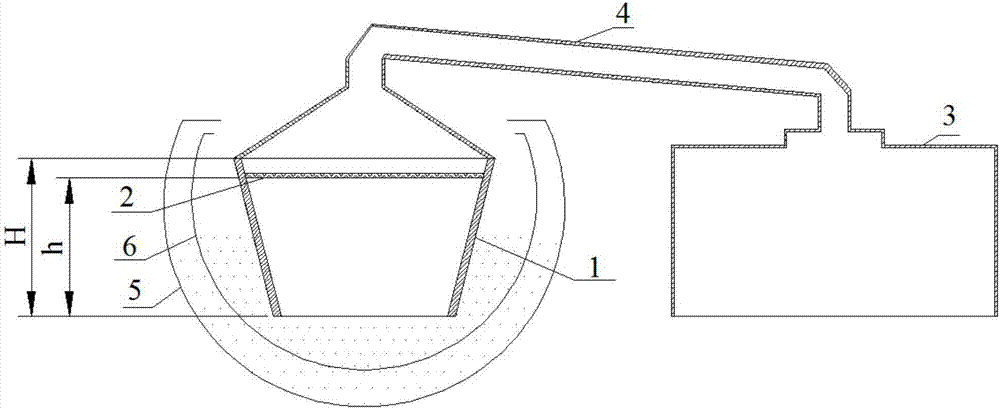Brewing process of rice wine
A process and technology of rice wine, applied in the field of winemaking, can solve the problems such as the storage time of the burnt taste of rice wine, the unstable aroma of Miao rice wine, and the lack of standardized operation, and achieve the effects of good economic benefits, comprehensive quality improvement, and convenience for industrial production.
- Summary
- Abstract
- Description
- Claims
- Application Information
AI Technical Summary
Problems solved by technology
Method used
Image
Examples
Embodiment 1
[0039] The rice used for brewing rice wine in this embodiment is rice.
[0040] The flow chart of described rice wine brewing process provided by the present embodiment is as follows figure 1 As shown, the specific steps are as follows:
[0041](1) Koji making: Take 14 kinds of herbal raw materials: 5 parts of gerbera, 10 parts of Hebei wood blue, 7 parts of bright birch leaves, 3 parts of sweet potato vines, 3 parts of March bubble leaves, 3 parts of Jiangnan leaves, 3 parts Spicy Polygonum, 3 parts of Dilian, 2 parts of Sweet Vine, 3 parts of yellow-haired kiwifruit leaves, 2 parts of white-haired kiwifruit leaves, 4 parts of Toguxiang, 2 parts of Nanzhumu leaves, and 2 parts of walnut leaves are respectively crushed to less than 1mm , mixed with 6 parts of rice bran, 7 parts of glutinous rice flour, and 8 parts of wheat bran, added 60 parts of water, and fully mixed to obtain a mixed wet material with a dry weight of 55 wt%. Add 0.67 parts of prepared The obtained herbal ...
Embodiment 2
[0052] The rice used for brewing rice wine in this embodiment is millet.
[0053] A kind of brewing technology step of rice wine is as follows:
[0054] (1) Koji making: Take 14 kinds of herbal raw materials: 3 parts of gerbera, 8 parts of Hebei wood blue, 6 parts of birch leaves with bright leaves, 5 parts of sweet potato vines, 2 parts of March bubble leaves, 6 parts of Jiangnan leaves, 5 parts Spicy Polygonum, 5 parts of Dilian, 4 parts of sweet vine, 4 parts of yellow-haired kiwifruit leaves, 3 parts of white-haired kiwifruit leaves, 6 parts of Touguxiang, 3 parts of Nanzhumu leaves, and 5 parts of walnut leaves, respectively crushed to less than 1mm , mixed with 5 parts of rice bran, 6 parts of glutinous rice flour, and 10 parts of wheat bran, added 46 parts of water, and fully mixed to obtain a mixed wet material with a dry weight of 65 wt%. In the mixed wet material, 2.63 parts of prepared The obtained herbal distiller's koji is 2wt% of the mixed wet material, and then...
Embodiment 3
[0065] The rice used for brewing rice wine in this embodiment is black rice.
[0066] A kind of brewing technology step of rice wine is as follows:
[0067] (1) Koji making: Take 14 kinds of herbal raw materials: 4 parts of gerbera, 9 parts of Hebei wood blue, 8 parts of bright birch leaves, 4 parts of sweet potato vine, 3 parts of March bubble leaves, 5 parts of Jiangnan leaves, 4 parts Spicy Polygonum, 4 parts of Dilian, 3 parts of Sweet Vine, 2 parts of yellow-haired kiwifruit leaves, 3 parts of white-haired kiwifruit leaves, 5 parts of Touguxiang, 2 parts of Nanzhumu leaves, and 4 parts of walnut leaves, respectively crushed to less than 1mm , mixed with 7 parts of rice bran, 6 parts of glutinous rice flour, and 9 parts of wheat bran, added 55 parts of water, and fully mixed to obtain a mixed wet material with a dry weight of 60 wt%. In the mixed wet material, 1.38 parts of prepared The obtained herbal distiller's koji is 1wt% of the mixed wet material, and then mixed uni...
PUM
 Login to View More
Login to View More Abstract
Description
Claims
Application Information
 Login to View More
Login to View More - R&D
- Intellectual Property
- Life Sciences
- Materials
- Tech Scout
- Unparalleled Data Quality
- Higher Quality Content
- 60% Fewer Hallucinations
Browse by: Latest US Patents, China's latest patents, Technical Efficacy Thesaurus, Application Domain, Technology Topic, Popular Technical Reports.
© 2025 PatSnap. All rights reserved.Legal|Privacy policy|Modern Slavery Act Transparency Statement|Sitemap|About US| Contact US: help@patsnap.com


